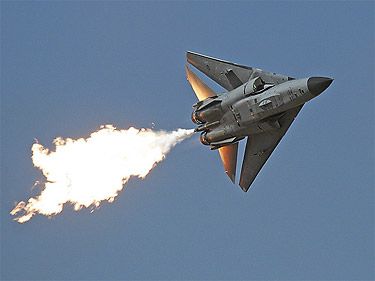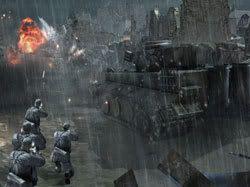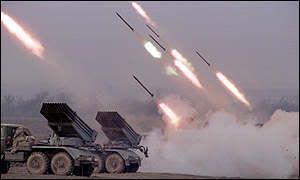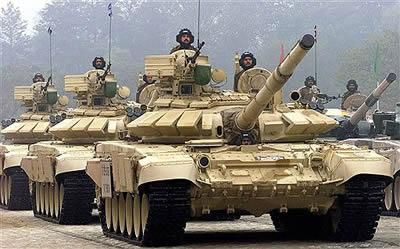First Weekend of the War: Air Strike
It was, to be sure, a long mission.
It was also one of the largest and most long-range sorties of the Canissian Royal Air Force, although not
the largest, and certainly not the largest in the world. That record was held from combatant nations in the Second War, although chances were with the Shepistan attacks, and their reliance on massive fleets of bombers, the record-breaking day would be soon.
The 200th Airborne Tanker Wings two squadrons had taken to the skies first, with an appropriate fighter escort and AWACS support, of course, and they loitered in wait for their charges. The mission would require two fuelings, but the potential return was considered high-value.

A thirsty fleet of B1R bombers, 8 full squadrons worth, and the 4 FB-111B squadrons of the 62nd Long Range Tactical Strike Wing, loaded with HARM missiles; another 4 squadrons of the 63rd LRTS Wing equally loaded; and a swarm of escorts in the form of 8 Air-superiority squadrons from the 1st Air Wing and their Typhoon H-1As.
Although, admittedly, this was just the first wave.
The B-1Rs and their various escorts skimmed low as they approached the northern shore of Shepistan, the 'Wild Weasel' FB-111Bs hunting for signs of contact with the Shepistani air defense radar network. As expected, almost all of the Shepistan attention was oriented towards the vicious fighting along the border with the Old Dominion.
As the air armada crossed Phase Line Zephyr, the air-superiority aircraft peeled away and entered Shepistani airspace along an alternate vector, at altitude. As expected, Shepistani interceptors scrambled to meet the invaders.
The Bombers continued to fly in low on their original course.

The bombers were detected, of course, by pickets and patrols, but by that time the Shepistani interceptors were already on their way to clash with the Royal Air Force's 1st Wing. Air-defense artillery lit up the approaching bombers, but the Wild Weasel FB-111Bs targeted the radars and lit into them with HARM missiles.
Shepistani air-defense were thick as mud, as expected, and the Wild Weasels had their work cut out for them. More Shepistani fighters scrambled to intercept as the first wave of B-1Rs moved into the areas where the Weasels had done their work, and began unloading on the air-defense sites. Bunker-busters pushed into the ground to destroy underground command and control centers; standard 1000-pounders were used to blast apart exposed buildings, launch sites, gun sites and so on; cluster bombs were dropped to disrupt attempts to repair the damage afterwards.


The B-1Rs were equipped with air-to-air missiles, but their defenses were limited, and despite having a bit of extra defense, they were not intended to handle enemy fighters alone. Once the Shepistan air forces' interceptors got organized, they closed with the RAF bombers to draw blood. The bombers used their air-defenses to confuse the issue while breaking contact.
But since most of the local air-interceptors had gone after the approaching fighters, several dozen miles away, the full weight of local interceptors was divided. The RAF lost some bombers, but a chunk had been taken out of Shepistan's northern coastal air defenses. It fell to the second wave to try to exploit the gap.
The RAF survivors pulled away, dogged by the Shepistani interceptors, splashing two more bombers in the sea in their pursuit. But Shepistani fighters saw the next wave of Canissian planes on approach, and while-- like the first wave-- the RAF pilots were tired from the long distance travelled, they also had a full load of munitions-- whereas the Shepistani interceptors had been gleefully corking off their missiles into the fleeing bomber force.
The RAFs 1st Air Superiority Command's 2nd and 3rd Wings headed the second wave, and this time they provided the tip of the spear for the incoming bombers. RAF air-to-air missiles slammed into the Shepistani formations, dropping and wounded a half-dozen as the tables were turned-- now the Shepistani fighters were fleeing, back to their homeland, dropping chaff and flare sin their wake.
The Shepistani flight leaders were no fools; they knew where their homeland's air defenses had been degraded and fled towards a different area of coastline, hoping to draw their Canissian attackers into a field of fire that would devastate them. The Canissians, however, weren't falling for it. They guarded the bombers' flanks as the heavies entered the area that had been cleared. Again, Wild Weasels did their jobs, providing follow-up strikes for remaining air defenses.
The target area had been chosen by Canissian war planners on purpose-- it was an area where air defenses were the thinnest, and the reason they were thin was precisely because there were no military targets of note nearby-- no airfield, army base, or dockyards, not even a supply depot worth note. Instead, once the bombers got through the initial air-defenses, they had near-open skies over... vast swathes of rural Shepistan.
It was exactly what the planners at the Hexagon wanted.

Bombers easily targeted telephone exchanges, railway bridges, roads and highways, road bridges and intersections, road repair and paving yards, dairy farms, feedlots, and grocery warehouses. Irrigation dams, grain silos, radio and TV stations, and fire stations fell
en masse. The strike was chosen on the weekend precisely to minimize civilian casualties while striking crippling blows at the Shepistani food and supply chain at its source, and deal equally crippling blows at the ability to respond to the damage and repair it.
The effects would take awhile to ripple through the Shepistani supply and logistics network, but added to the damage was the hysteria of civilians, and the increased demand on military resources to plug the sudden gaps in their rear area supply lines. Military Police and Combat Engineers would be called from support duties at the front, local Reserves would be mobilized, more strain would be put on the Shepistan budget to deal with the problem.
Shepistani fighters had put up defenses, of course, and the RAF had taken losses-- unwelcome, but expected. But the aggregate effects of such destruction in the rear areas would, it was certain, put a serious dent in Shepistan's ability to sustain forces in the war and the civilian population's willingness to endure.

The RAF cleared out, leaving behind the following for the butcher's bill:
26 destroyed FB-111Bs and 17 destroyed B-1Rs.
18 Destroyed Typhoons.
21 Pilots had ejected over Shepistani territory and risked capture.
8 Pilots ejected over the sea, and were being picked up by Canissian submarines.
All air commands involved in this raid will need extensive repair & refit down time and will not be combat-ready again in the immediate future, with the exception of the tankers.
Shepistan lost:
47 Air-interceptor fighters (unsure of type?)
38 Pilots ejected safely over Shepistan
2 Pilots ejected over the sea and were being picked up by Canissian submarines.
'Several' fixed air-defense sites.
Massive farm and food gathering, packaging, and distribution infrastructure losses.
Communication infrastructure (radio, TV, telephone)
Road & Rail infrastructure and the ability to quickly repair same.













